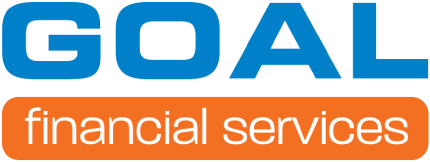Essential Superannuation EOFY Tips This 2022
The week leading up to 30 June is an excellent time to take advantage of any tax benefits that may be available within superannuation.
There are certain contributions you can focus on to lower your taxable income or investment earnings taxes.
Below is essential advice to help you make the most of your super this EOFY, plus a bonus tip.
1. Check if you are eligible for a government co-contribution.
If you’re a low to middle-income earner who has made (or plans to make) an after-tax contribution to your super account for which you don’t claim a tax deduction, you could be eligible for a $500 government co-contribution.
If your total income in the 2021-2022 financial year is equal to or less than $41,112, and you make after-tax payments to your super fund of $1,000, you will get the maximum co-contribution of $500.
If your total income in the 2021-2022 fiscal year is between $41,112 and $56,112, your maximum entitlement will gradually decrease as your income rises.
You will not receive any co-contribution if your income is equal to or greater than the higher income threshold of $56,112 in the 2021-2022 fiscal year.
To qualify, you must earn at least 10% of your assessable income from employment or a business.
2. Split your super contributions with your spouse and get a tax offset.
If you make more than your partner and want to supplement their retirement funds or vice versa, you can consider spouse contributions. Making a non-concessional (after-tax) contribution directly into your spouse’s super account is one of the simplest methods to improve your spouse’s retirement savings and get a spouse contribution tax offset.
Spouse contributions offer you a cash gain besides topping up your spouse’s super account — provided you meet certain qualifying criteria.
If you choose to contribute to your spouse’s super account, you might get a tax break of up to $540 on your annual tax bill.
To receive the maximum tax benefit, you must pay at least $3,000 and your partner’s annual income must be below $37,000.
You’ll still be eligible for a partial offset if their income reaches $37,000. You won’t be eligible for the offset after their income surpasses $40,000, but you can still make contributions on their behalf.
3. Claim deductions for personal deductible contributions.
Personal super contributions paid to your super fund from after-tax income, such as from your bank account directly to your super fund, may be eligible for a tax deduction.
To facilitate this, submit a notification of intent to claim or vary a deduction for personal contributions form (NAT 71121) to your super fund. You need to wait for their acknowledgement before you can claim a deduction for your personal super payments. You must also meet other eligibility requirements.
People who earn their income from salaries and wages; a personal business (e.g. self-employed contractors, freelancers); investments; government pensions or allowances; superannuation; partnerships or trust distributions; and foreign sources may be eligible to receive a personal contribution deduction.
Note that the personal super contributions you claim as a deduction will affect your concessional contributions cap.
Bonus tip: Make interest prepayments.
You can prepay up to 12 months of interest in an investment or margin loan and claim a deduction in the year the interest is paid — which will be the year you pay the loan.
However, you cannot simply pay 12 months’ worth of loan interest. Instead, you need to request that your lender charge you the interest in advance. If you deposit 12 months’ worth of payments into a typical loan, the principal will be reduced; however, no interest will be charged, so no deduction is possible.
Super changes from 1 July 2022
The government announced certain changes to the super in order to provide all Australians with more opportunities to save money. The following is a list of important super upgrades that will take effect starting 1 July.
- The $450 monthly minimum income limit will be abolished, allowing more people to receive employer contributions under the Superannuation Guarantee (SG).
- Work test requirements for people aged 67 to 75 will be relaxed, and they will only apply to individuals who want to claim a tax deduction on any voluntary super contributions they make.
- More Australians will be able to make up to three years’ worth of non-concessional super contributions in the same financial year now that the cut-off age has been raised from 67 to 75.
- More people will be eligible to make tax-free downsizer contributions to their super from the proceeds of their property sale now that the eligibility age has been set from 65 to 60.
- First home buyers who meet certain criteria will be able to take out an additional $20,000 in voluntary contributions from their super to put towards a down payment on their first home.
Get your EOFY documents in order
It’s that time of year again, so do what you can to make the most of your tax deductibles.
One way to do this is by optimising super- and loan-related tax benefits, including the tips shared here. And with new super developments this July, you’ll have more chances of benefitting from your super savings soon.
Grow Your Wealth With GOAL Financial
Money won’t magically appear if you don’t do the work and lay a foundation for a solid financial future. So if you’re overwhelmed or don’t know where to start, get in touch with Robert Warry of Goal Financial Services on rob.warry@goalfs.com.au or 1300 33 GOAL (1300 33 4625).
General Advice Warning: The information in this communication is provided for information purposes and is of a general nature only. It is not intended to be and does not constitute financial advice or any other advice. Further, the information is not based on your personal objectives, financial situation or needs. You are encouraged to consult a financial planner before making any decision as to how appropriate this information is to your objectives, financial situation and needs. Also, before making a decision, you should consider the relevant Product Disclosure Statement available from your financial planner.





